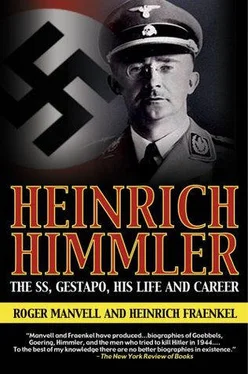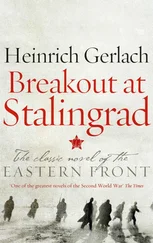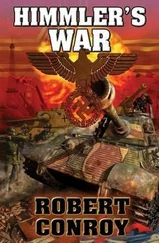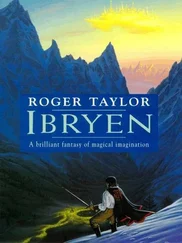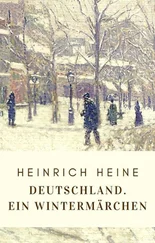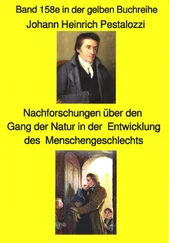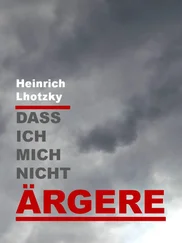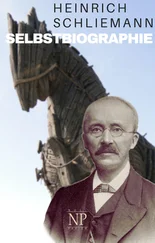The two days of the Munich putsch first brought together in a common action the future Nazi leaders, Hitler, Goring, Roehm and Himmler. But whereas Himmler stood in the background holding a flag, Göring, the former ace flier, marched beside Hitler and Ludendorff on 9 November, the day after Hitler’s attempt at a coup d’état during a meeting addressed by leading Bavarian ministers in the hall of the Bürgerbräukeller, the great tavern of Munich. Roehm, by now a close associate of the Nazi movement, had agreed to march on the military headquarters of the Ministry of War on the Schoenfeldstrasse, where they barricaded themselves in with barbed-wire and set up machine-guns for their defences. It was the only successful action of the coup. Roehm and his men occupied the building and stayed there during the night of 8/9 November, while Hitler and his storm-troopers spent the hours of darkness in the grounds of the Bürgerbräukeller before the decision was reached to march on the centre of the city the following day and link up with Roehm, who alone among the leaders of the putsch did not behave like an actor in a melodrama. The march, which began around eleven o’clock, led by Hitler flourishing a pistol and Ludendorff looking grim and important, involved some three thousand storm-troopers crossing the River Isar and progressing for over a mile to the Town Hall in the Marienplatz. After this another mile had to be covered through narrow streets before the Ministry of War was reached. It was then that armed police finally stopped the march, and in the scuffle that followed Hitler was slightly injured and Goring badly wounded in the groin. Only Ludendorff strode on, oblivious of the bullets and sure of the iron weight of his authority. But he was arrested; Roehm and his men were forced to surrender some two hours later. They had been living in a state of siege in the Ministry since dawn, when infantry forces of the regular Army had put a cordon round the building.
The times were too uncertain for violent recriminations. The Nazi Party was banned; Himmler lost his job, and was forced to return home cap-in-hand. Home now meant Munich, to which the family had moved back in 1922. Roehm, whom Himmler still regarded with respect and affection as his superior officer, was confined like the other leaders of the unsuccessful putsch. On 15 February 1924, Himmler asked permission of the Bavarian Ministry of Justice to visit Stadelheim prison where Roehm was held. He rode out on his much-prized motor-cycle, taking with him some oranges and a copy of Grossdeutsche Zeitung. ‘Talked for twenty-minutes with Captain Roehm’, he recorded when he got back. ‘We had an excellent conversation and spoke quite unreservedly.’ They discussed various personalities, and Roehm was grateful for the oranges. ‘He still has his sense of humour and is always the good Captain Roehm’, remarks Himmler.
At the trial of the conspirators that followed on 26 February and lasted for over three weeks, Hitler acted as if he were the accuser, and the trial degenerated into a soft formality. Though Hitler was found guilty and served a nominal sentence, Roehm was completely discharged even though he too had been pronounced guilty of high treason. Hitler was confined in Landsberg castle; Roehm pursued his own plans for founding a revolutionary military movement while Hitler, dictating Mein Kampf, deliberately let his underground party disintegrate in his absence. By the time Hitler was released, owing to the favour shown him by the Bavarian Minister of Justice, Franz Gürtner, Roehm was no longer an acceptable figure in Hitler’s party. By April 1925 he felt bound to send Hitler his resignation as leader of the storm-troopers.
Himmler meanwhile had also been active. Much to his family’s annoyance, he refused to seek work: he wanted, he said, to leave himself free to engage in politics. Corresponding most closely to the disbanded Nazi Party were the nationalist and anti-Semitic groups of the extreme right known as the Völkische movement. Prominent among their supporters were Ludendorff, Gregor Strasser and Alfred Rosenberg; the Völkische groups were collectively a powerful element in the Bavarian government, and in 1924 they managed to draw sufficient support in the Reichstag elections to secure themselves thirty-two seats. Strasser, Roehm and Ludendorff were among those who became members of the Reichstag. 8
The sight of such success naturally attracted Himmler. With time on his hands, he took part in the Völkische campaigns in Lower Bavaria. He began to gain experience as a member of a team of speakers at political meetings; he toured the smaller towns and the villages in the area of Munich and spoke on ‘the enslavement of the workers by stock exchange capitalists’ and on ‘the Jewish question’. ‘Bitterly hard and thorny is this duty to the people’, he writes after difficult meetings in the countryside attended by peasants and communists. Along with the other speakers he would mingle with the audience and encourage individual argument. The groundwork of his initial political experience was therefore laid in the same hard school as that of young Joseph Goebbels, who was about to be drawn into the same sphere in politics and address similar political meetings in the industrial area of the Ruhr.
Hitler’s name barely appears in the surviving diaries. On 19 February 1924 Himmler notes that he reads aloud to some friends from a pamphlet called Hitlers Leben , but with the departure of Roehm he had to find another leader to whom he might offer his services and from whom, if possible, also obtain paid work.
He rejoined the Nazi Party on 2 August 1925; it was during this period that he also joined the staff of Gregor and Otto Strasser, the Bavarian brothers who were among the principals in the reconstruction of the Nazi movement. The Strassers had a family druggist establishment in Landshut. They remained uneasy partners to Hitler who, after his release from Landsberg on 20 December 1924, began at the age of thirty-five to gather once more the reins of leadership into his own hands. While the Strassers were for compromise with other nationalist groups, Hitler was determined to lay the foundation of a new and vigorous political party over which he had full personal control. In the very month of his release from prison, the Nazi-Völkische alliance lost all but fourteen of its thirty-two seats in the Reichstag after the second election of the year, but Hitler, to the exasperation of the Strassers and Roehm, did not seem to care. Once he had obtained the removal of the ban on the Nazi Party, he was prepared to lose the support of the anti-Catholic Völkische groups. All that concerned him was to make a new start, to reform the Nazi Party under his own undisputed leadership. This he announced at the end of February 1925, and his platform included a virulent campaign against the Marxists and the Jews.
Himmler had obtained his appointment nominally as a secretary, but actually as a general assistant prepared to undertake any duties assigned to him. According to Otto Strasser, his brother welcomed Himmler because, as he put it, ‘the fellow’s doubly useful — he’s got a motor-bike and he’s full of frustrated ambition to be a soldier’. 9He was responsible for surveying the secret arms dumps which were kept concealed in the country districts away from the eyes of the Inter-allied Control Commission. Himmler, aged twenty-four, enjoyed this underground activity; it filled him, says Otto Strasser, with nationalistic pride, and he preferred it to the office work which he had to carry out for Gregor Strasser who, as well as being a Reichstag Deputy, was in charge of Party activities in the district of Lower Bavaria, a position he had held since 1920. Gregor Strasser was a vigorous orator and a tireless organizer. At this stage Hitler could not spare him and, in spite of the growing differences between them, it was by mutual consent that the Strassers finally moved the main sphere of their activities to the north. Otto Strasser, whose particular flair was for journalism, moved to Berlin and founded there the northern Party newspaper, the Berliner Arbeiterzeitung.
Читать дальше
